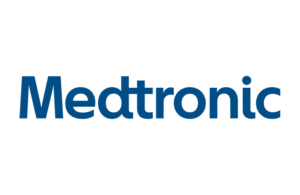 Medtronic (NYSE:MDT) today announced results from a study of post-stroke workflow protocols and cardiac monitoring.
Medtronic (NYSE:MDT) today announced results from a study of post-stroke workflow protocols and cardiac monitoring.
The DiVERT Stroke clinical study demonstrated that the protocols and monitoring vary significantly across community hospitals and academic centers. Medtronic presented data today at the 14th World Stroke Congress in Singapore.
Medtronic’s first-of-its-kind, multi-center study evaluated more than 7,600 cryptogenic, large-artery and small-vessel stroke patients. It took place across 12 hospitals in the U.S. The study found more than 75% of cryptogenic stroke patients at large academic centers received some form of cardiac monitoring. This includes external cardiac monitors and implantable loop recorders.
Conversely, 5% of cryptogenic stroke patients received such monitoring at community hospitals.
Better stroke prevention and treatment tech is a priority for Medtronic. Last week, at our DeviceTalks West event in Santa Clara, California, company officials unveiled their Co-Lab neurovascular innovation incubator program. The goal of Co-Lab is to bring innovations to market to address strokes.
More study outcomes
Additionally, the new study found that community hospitals are half as likely to consult cardiology than academic centers. Those hospitals consulted cardiology at a 16% rate, compared to 34% in academic centers.
Community hospitals proved more likely to diagnose cryptogenic stroke (93.2%) than large-artery (5.4%) or small-vessel (1.4%) stroke. Meanwhile, academic centers diagnosed stroke subtypes evenly (32.1%, 37% and 29.9%, respectively).
Medtronic reported that 65.5% of patients from academic centers who received cardiac monitoring post-stroke received short-term monitoring. The company said that 10.5% received long-term monitoring. Community hospitals proved less likely to order short-term (1%) and/or long-term (4.3%) monitoring in their patients.
Patient attrition registered at a higher rate in academic centers at 54.2% compared to 45.2% in community hospitals. Six-month recurrent stroke rate came in similar in both groups (9.1% in academic centers and 7.4% in community centers).
According to Medtronic, multiple clinical studies demonstrate a high risk of AFib post-stroke in cryptogenic stroke patients. In many patients, it takes more than 80 days for AFib to appear. Medtronic said this reinforces the importance of long-term continuous monitoring.
Through DiVERT, Medtronic aims to identify workflow deficiencies in Phase I and address them in Phases II and III.
“Our findings from Phase I of DiVERT underscore the need for stronger, standardized care pathways in both academic and community centers to ensure that stroke patients receive guideline-directed therapy. We all need to do a better job detecting hidden atrial fibrillation in these patients because treatment will change – starting anticoagulation prevents recurrent stroke,” said Dr. David Z. Rose, associate professor of vascular neurology at the University of South Florida Morsani College of Medicine at Tampa General Hospital. “Phase II of the study will address these workflow deficiencies in a standardized post-stroke protocol for anyone to use at any stroke-capable hospital. While this protocol may not be the ultimate answer, it’s a much-needed first step.”